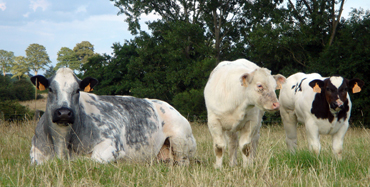Origin and evolution of the breed
One has to go back to the beginning of the past century to see the first selection attempts to breed a dual purpose animal from fairly uniform local cattle and the very popular Sorthorns widely used in the second part of the 19th century.
However, everything was called into question when the First World War broke out.
It was only in 1919 that an Agricultural Charter was developed in the form of a Royal Decree which paved the way for further breed development.
The selection work started up again, but with a clear objective: a rectangular «dual purpose» breed of cattle, with a good stature, average muscle structure and good milk production (4.000 liters at 3.5%). This trend was firmly maintained until 1950.
The years from 1950 to 1960 were a period of transition, during which the early signs of a new orientation became clearly visible. But the watershed occured between 1960 and 1970.
First for bulls and later for cows, a clear preference was granted to the muscular development. The response to this selection was remarkable. A new type of breed appeared, combining significant muscle development (shoulders, withers, back, loin, and hind quarters), size, fine but solid bone structure, harmonious contours with round ribs, inclined rump, hidden hips and detached tail.
In 1973, the breed, hitherto called «race de Moyenne et Haute Belgique» was renamed BELGIAN BLUE BREED divided into 2 distinct branches: the meaty type and the dual purpose type.
Belgian Blue Breed
Dual purpose type
Certain breeders have continued to select animals for combined milk and meat production. This selection developed parallel to the meaty type’s one, by using completely different blood lines. The «Bleue du Nord» type belongs to the same group and is found in the Maubeuge region in France.
With the establishment in 1999 of the agri-environmental measurement plan for the protection of endangered species, the interest for this dual purpose branch has been growing and as of 2005, more or less 150 breeders use the dual purpose Belgian Blue type in Belgium.
They are located in the Provinces of Hainaut and Brabant. Within the dual purpose type, 2 variants are identified according to the genotype:
mh/mh

These animals are genetically identical to the meaty type ones. However their selection is also based on the milk production and the easy-calving. Their milk production varies between 4200 and 4800 liters.
mh/+ ou +/+

These animals of dairy type produce on average from 5400 to 6000 liters of milk.
Meaty type
The selection of double muscled cattle responses to the economic climate and in particular, to the demand of a meat industry very sensitive to the muscle conformation, reflecting the composition of the carcass. The increased profit linked to well muscled cattle pushes the breeders to mate the meatiest animals to each other.
Belgian Blue has become a specific breed of beef cattle, with the following traits and benefits: extraordinary muscle development, desirable meat quality (tenderness), stature, early maturity, feed efficiency, docility, uniformity and maternal aptitudes.
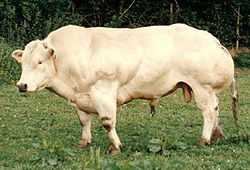
Expansion of the breed
The Belgian Blue breed represents 50% of the national herd, which is made up of 1.083.408 cows.
61 % of the Belgian Blue livestock is in the Walloon region and 39% in the Flemish part of Belgium. The Belgian Blue herd is spread all over Belgium. However, it is in the Provinces of Luxemburg, Hainaut and Western Flanders that the number of Belgian Blue is the most important.
Whereas full blood Belgian Blue is used in Northern Europe for meat production, its extraordinary quality in crossbreeding programs has enhanced its expansion in the whole world. That is why we see Belgian Blues in France, in the Netherlands, in Great Britain, in Ireland, in Denmark, in USA, in Canada, in Brazil, in Australia, in New-Zealand, in Mexico...
The breed is perfectly suited to a great diversity of soils and climates encountered in its international expansion. Its very calm temperament and its docility are also very much appreciated.
Due to its exceptional qualities in crossing and full blood breeding, the request for breeding stock is constantly increasing worldwilde.
In order to establish internationally the recognition of the Belgian Blue breed, 16 Herd-Book were created in Europe, America, Asia and in Australia.
These 16 Herd-Books, members of the BBI, work together in order to :
- harmonize the methods and criteria of identification and registration of BBB in the different Herd-Books;
- keep the registers and registration papers of the animals exchanged or sold;
- exchange information regarding the breeding of Belgian Blue;
- favor the exchange of genetics;
- cooperate in the promotion of the Belgian Blue breed;
- represent internationally the interests of the Belgian Blue.
Thanks to this promotion, the preconceived ideas about the Belgian Blue disappear and the breed experiences an always growing success.
beginning XX century
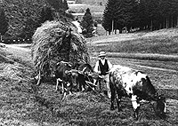
1902

1930

1940

1965

1975

1989

1993

2002

2006

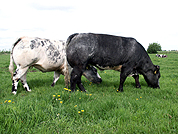
Danmark
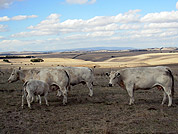
Australia
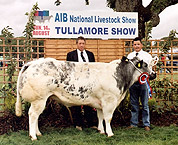
Belgian Judge : National
Tullamore (Ireland)

